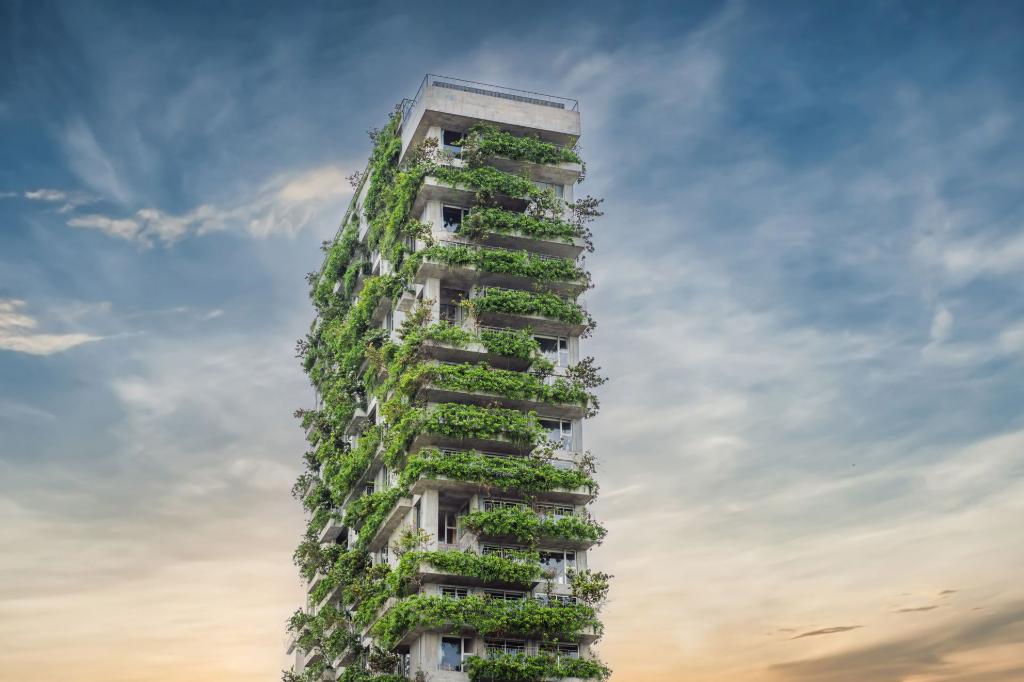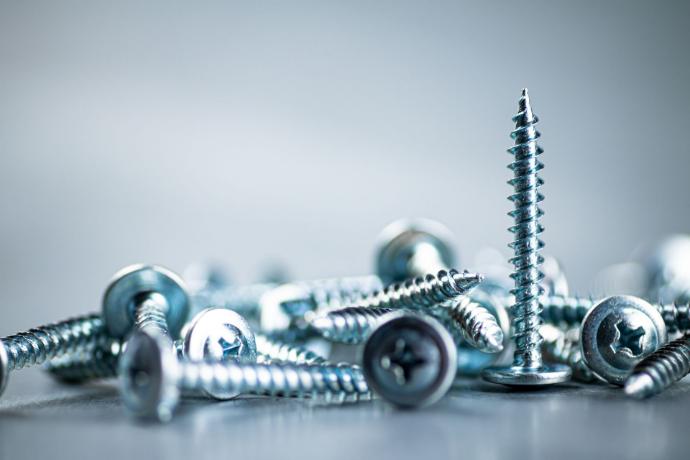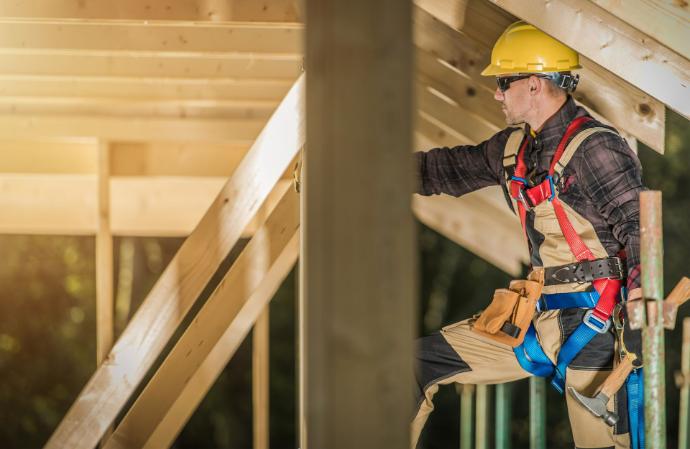
The construction industry is one of the world’s key economic pillars — and it’s undergoing a major transformation driven by sustainability, digitalization, and shifting market demands. Traditional construction activities account for about 40% of global energy-related carbon emissions. Therefore, choosing sustainable building materials is no longer just a trend, but a necessity for creating healthier, more resilient, and longer-lasting buildings
In the United States, the Architecture, Engineering, and Construction (AEC) sector is rapidly moving toward sustainability — not as an option, but as a requirement. With the US General Services Administration (GSA) pushing the "Buy Clean Initiative" and the rise of new green building standards like LEED v5 and ASHRAE 189.1 sustainable materials are becoming the common language for both public and private projects.
This article highlights the top sustainable building materials of 2025 and explores how structural screws and fasteners play a critical role in three construction priorities:
1. High-Efficiency Construction – faster, modular, and more precise installation
2. Eco-Friendly Design – low-carbon production and recyclable materials
3. Structural Safety – stronger connections, corrosion resistance, and long-term durability.
Top Sustainable Material Trends for 2025: Low-Carbon Design and Circular Resource Use
In 2025, the key drivers for material selection are reducing embodied carbon and maximizing resource circularity throughout the building lifecycle.
1. Game Changers: Bio-Based and Rapidly Renewable Materials
Bio-based materials are becoming a focus due to their excellent carbon storage capacity, directly helping projects meet carbon neutrality goals.
|
Top Material |
Key Sustainability Feature |
Value & Application |
|
Mass Timber (CLT / GLT) |
Carbon Storage: Significantly lower embodied energy than concrete and steel; locks CO₂ into the structure. |
High-Efficiency Construction: Works perfectly with off-site prefab systems to speed up mid- and high-rise construction. |
|
Hempcrete |
Negative-Carbon Lifecycle: Absorbs more CO₂ while growing than it releases during processing. |
Superior Insulation: Lightweight and highly insulating, reducing long-term energy use. |
|
Mycelium |
Fully Biodegradable: G Made from agricultural waste with almost zero manufacturing energy. |
Circular Use: Ideal for interior acoustic or insulation panels that can return to nature after use. |
|
Bamboo |
Rapid Renewal: Matures in just 3–5 years, minimizing land and carbon impact. |
Durable Applications: Used for flooring, cabinetry, and light framing. |
|
Cork |
Tree-Friendly Harvesting: Taken from cork oak bark without harming the tree. Naturally antimicrobial and thermally efficient. |
Versatile Use: Great for interiors and acoustic layers in offices or apartments. |
2. The Green Concrete Revolution: Low Carbon & Carbon Capture
Traditional cement is a major source of carbon emissions in the construction industry. In 2025 the market is actively adopting alternatives that fundamentally change the carbon footprint.
|
Top Material |
Key Sustainability Feature |
Value & Application |
|
Limestone–Calcined Clay Cement (LC³) |
Up to 40% Emission Reduction: Replaces a major portion of clinker with clay and limestone. |
Easy Integration: Compatible with existing cement plants — a practical low-carbon alternative. |
|
Carbon-Mineralized Concrete |
Permanent Carbon Storage: Injects and mineralizes CO₂ during curing, enhancing compressive strength. |
Performance Boost: Ideal for precast components and pavements requiring strength and sustainability. |
|
Geopolymer Concrete |
Zero-Clinker Mix: Uses industrial by-products like fly ash and slag, eliminating Portland cement. |
Tough & Chemical-Resistant: Perfect for coastal, industrial, or chemical-resistant environments. |
3. High Durability and Circular Practices
- Recycled Steel: Can be recycled indefinitely, and up to 75% more energy-efficient than virgin steel when produced in electric-arc furnaces — the go-to low-carbon framing option in the U.S. market.
- Modified Wood (e.g., Accoya®): Non-toxic modification extends fast-growing timber lifespan to 50 years with high dimensional stability, supporting resource efficiency and long-term performance.
Structural Fastener Trends: Meeting Efficiency, Sustainability, and Safety
Structural Fasteners (construction screws and bolts) are the silent heroes of structural safety and construction efficiency. In 2025, high-performance fasteners are evolving toward smart technology, eco-friendly materials, and high-resilience performance to meet the demands of new sustainable building systems.
Trend 1: High-Efficiency Construction — Smart and Precision Manufacturing
- Smart Fasteners: Integrated IoT sensors can monitor torque, vibration, and stress in real time — essential for long-term structural health in CLT or steel buildings.
- Customized Designs: Specialized fasteners are designed for CLT and hybrid structures ensure reliable connections while reducing on-site labor and installation time.
Trend 2: Environmental Friendliness — Green Materials and Non-Toxic Coatings
- Recycled Metals: Using reclaimed steel or aluminum helps meet LEED v5 recycled-content credits and supports a greener supply chain.
- Eco-Friendly Coatings: Non-toxic, low-VOC zinc-nickel or ceramic finishes extend product life, improve corrosion resistance, and reduce health and environmental risks.
Trend 3: Structural Safety — High-Performance Alloys and Durability
- High-Strength Alloy Bolts: Manufactured using titanium, high-strength polymers, or new composite alloys to withstand high loads. This ensures structural integrity under extreme conditions like earthquakes and high winds.
- Extreme Climate Resilience: Facing US coastal hurricanes, earthquakes, and salt corrosion , fasteners must possess exceptional long-term anti-rust and structural stability. This is critical for maintaining the long-term value of building assets.
Conclusion and Outlook: Investing Strategically in a Greener Future
The U.S. construction market is undergoing a fundamental shift in 2025. For suppliers, developers, and contractors, success will depend on:
- Adopting low-carbon materials (like CLT and LC3) to reduce embodied carbon and stay competitive.
- Pairing them with smart monitoring, eco-friendly coatings, and high-strength structural fasteners to ensure safety, durability, and compliance with green standards.
Sustainability isn’t just about meeting regulations — it’s a smart business strategy that reduces operational costs, extends building lifespans, and strengthens competitiveness in the growing green-project market.
References
- “Top sustainable building materials for an eco-friendly future.” Chaos Blog. blog.chaos.com
- “18 Innovative sustainable building materials for 2025.” Accoya. accoya.com
- “14 building materials shaping the future of the built environment.” UBE. University of the Built Environment
- “Top sustainable construction materials to build a better world.” Autodesk Blog. autodesk.com
- “7 Products for 2025 that align with LEED v5 themes.” USGBC. usgbc.org
- “Construction material trends in 2025: what you need to know.” ACE Building Materials. Ace Building Materials
- “Fastener trends 2025: innovations shaping screws & bolts.” Screw Expert. screwexpert.com
- “Structural wood screws market size and outlook 2030F.” TechSci Research. techsciresearch.com
- “What is the new trend for school building designs?” Calahan. Calahan Construction Services
- “50 Sustainable construction materials to watch in 2025.” revalu.io. revalu.io
- “Why choosing sustainable building materials is important in 2025.” GBC Engineers. gbc engineers
- “Structural Wood Screws Market Size and Share Forecast Outlook 2025 to 2035” futuremarketinsights.com

Ling Wu, Marketing Analyst
Ling Wu is a marketing analyst at Fong Prean, focusing on market research, trend insights, and content strategy. With a passion for data-driven storytelling, Ling bridges industry knowledge with actionable insights to help businesses thrive.


